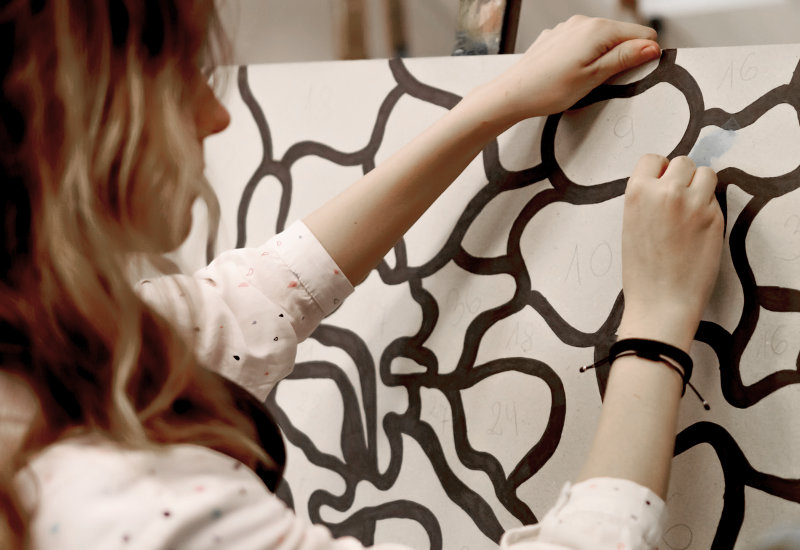The sources of inspiration and emanation of the “Kinesthesias” project carried out in the Gronowo School of Fine Arts should be looked for in the mature theories of established conceptual artists. Let us recall that the 4th edition of the “Wena” Grant Programme Competition, entitled “The Art of Mending the World”, was inspired by the work of Jerzy Ludwiński, a critic, writer and a conceptual art aficionado. In the 1970s, the artist compared art to glue. Art is a conglomerate of disparate, seemingly incongruent elements, that fills the gaps and makes our lives full of surprises. The “Kinesthesias” project broadened the “impact radius” and aimed to introduce students to a vastly greater number of artists’ profiles and concepts, as well as conceptual movements in Polish and foreign contemporary art. The project involved a critical examination of the concepts of Jerzy Ludwiński, Yoko Ono, Joseph Kosuth, Joseph Beuys, Wanda Gołkowska, Edward Krasiński, Tadeusz Kantor, Roman Opałka, Andrzej Szewczyk, Krzysztof Wodiczko, etc.
The project was heavily focused on study visits, giving the participants an opportunity to explore the collections and exhibition profiles of several institutions, such as the Museum of Contemporary Art MOCAK, the Centre for the Documentation of the Art of Tadeusz Kantor Cricoteka, the Gallery-Studio of Tadeusz Kantor in Krakow, and the Bunkier Sztuki Gallery.
The key outcomes of the project include a creative reflection on the crisis of relationships and ways of mending the world with art; deepened awareness of the strategies utilised in a creative process gained through the creation of sketches and photographs at the plein-air workshop in Krakow; materialised projects representing contemporary interpretation of Wanda Gołkowska’s “Kinestezjon”*; an exhibition documenting the creative process the project participants went through, showcasing conceptual sketches, recordings, documentary material and the participants’ attempts at making installations inspired by “Kinestezjon”. In late September/early October 2022, the students were informed about the opportunity to participate in the project and were made familiar with the project idea, objectives and assumptions. Those willing to participate were recruited, and then the project team discussed the plan for workshops and museum visits, including a trip to Mocak in Krakow.
10 female students, mainly from the 2nd and 3rd grade, participated in the project. “This is a very diverse group, both in terms of interests and characters. Thanks to this, we were able to fully embrace the opportunity to exchange experiences, energy and ideas”, as described Paulina Łuczak. Between January and May 2023, 5 workshop meetings on conceptual art were held; they were conducted by Paulina Łuczak. During this period, the young people also worked on their pieces and projects under the supervision of Małgorzata Olewnik, a teacher of the basics of design and multimedia.
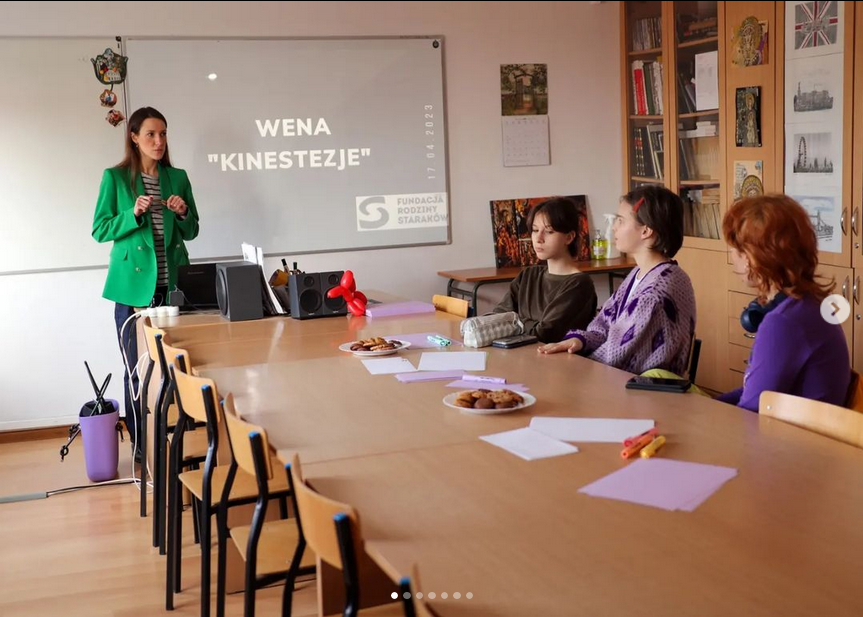
Workshop on conceptual art conducted by Paulina Łuczak
During the project activities, we reflected on the creative process itself in order to understand that ART IS THINKING. That is to say, that the process of arriving at an idea is just as important – and perhaps even more important – than its final materialisation, i.e. a completed, exhibited and signed artwork.
Paulina Łuczak, teacher conducting the project
In May, special emphasis was placed on the installation of the works and their display during the school's Open Door days.
On 22 May 2023, the project closing ceremony was held. The young people gave visitors and the viewing public a tour of their exhibition, delivering author commentary on the works and answering any questions.
“This event was very moving and emotional for us”, commented the participating students. The artists learnt how to present their own artistic concepts and honed their skills to talk about the inspirations, goals and assumptions behind the creation of their works. They managed to overcome stage fright and share their own thoughts with the audience.
The final stage of the project was an educational trip to Kraków in the second half of June 2023 (15-19.06.2023). During the study visit, the students had multiple occasions to explore a variety of artistic forms and approaches and visited the following institutions: the Centre for the Documentation of the Art of Tadeusz Kantor Cricoteka, the Manggha Centre of Japanese Art and Technology, the National Museum in Kraków, the Szołayski House - Branch of the National Museum in Kraków, Bunkier Sztuki Contemporary Art Gallery, MOCAK Museum of Contemporary Art in Kraków, the Stanisław Wyspiański Museum, and the Józef Mehoffer House Museum.
The project team participated in museum lessons, workshops and guided tours of exhibitions. The young artists learnt more about the work of Tadeusz Kantor, conceptual artists and creators of Polish modernism (Młoda Polska). At the Centre for the Documentation of the Art of Tadeusz Kantor Cricoteka, they took part in a series of workshops, that were yet another opportunity for them to “open up” to unconventional, conceptual creative practices. How to reflect on time, gesture, mindfulness, colour, presence, touch, movement, body, objects, and relationships between elements in a completely different way in one’s works?
In the course of the project, the artists created 9 conceptual works, which were presented during the school’s Open Door days and the project closing ceremony.
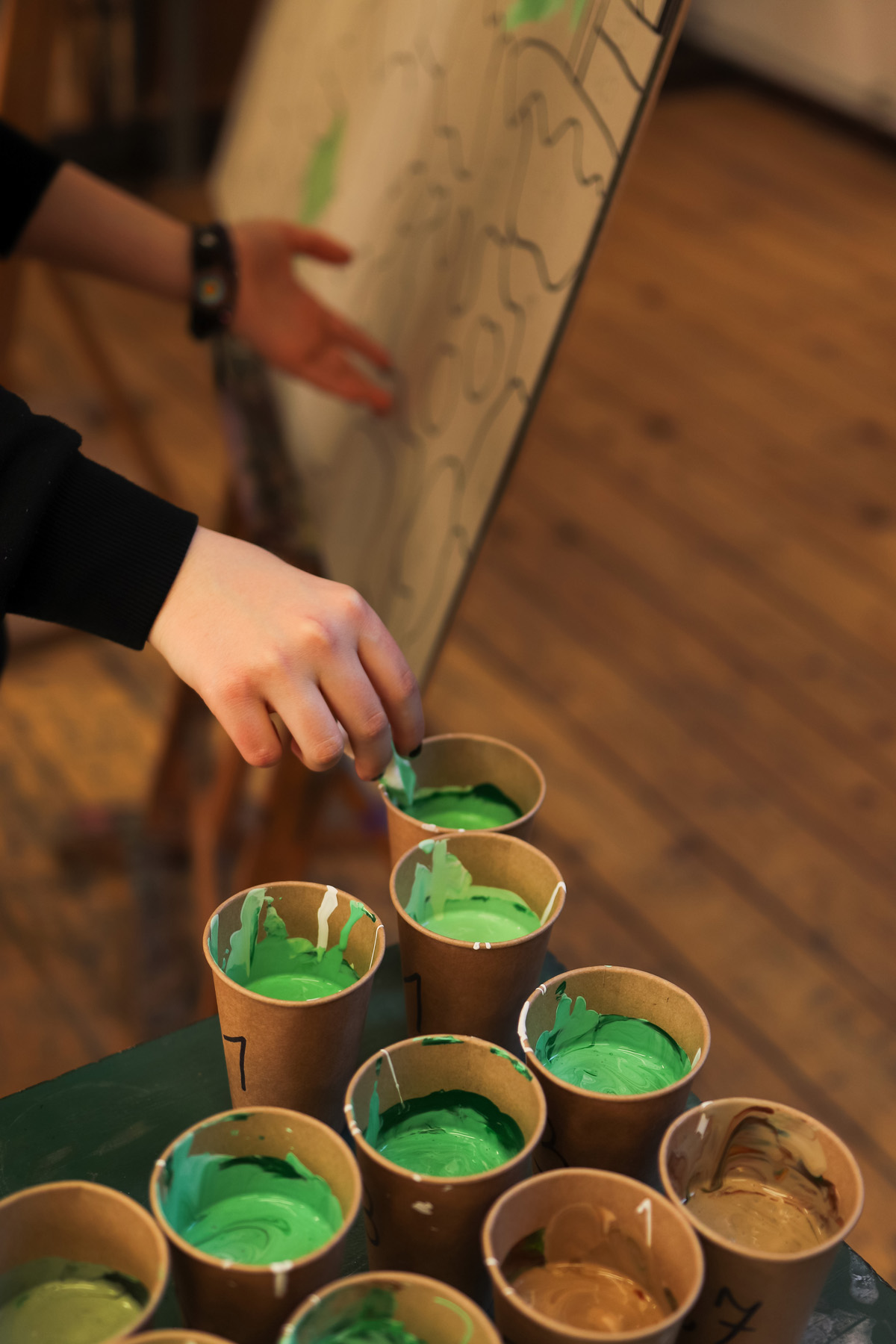
The work by 3rd-graders Aleksandra Malewicz and Justyna Łojewska is a participatory colouring board, that is intended to mobilise the recipients to take action.
This simple form also asks the philosophical question of whether art is creation or reproduction?
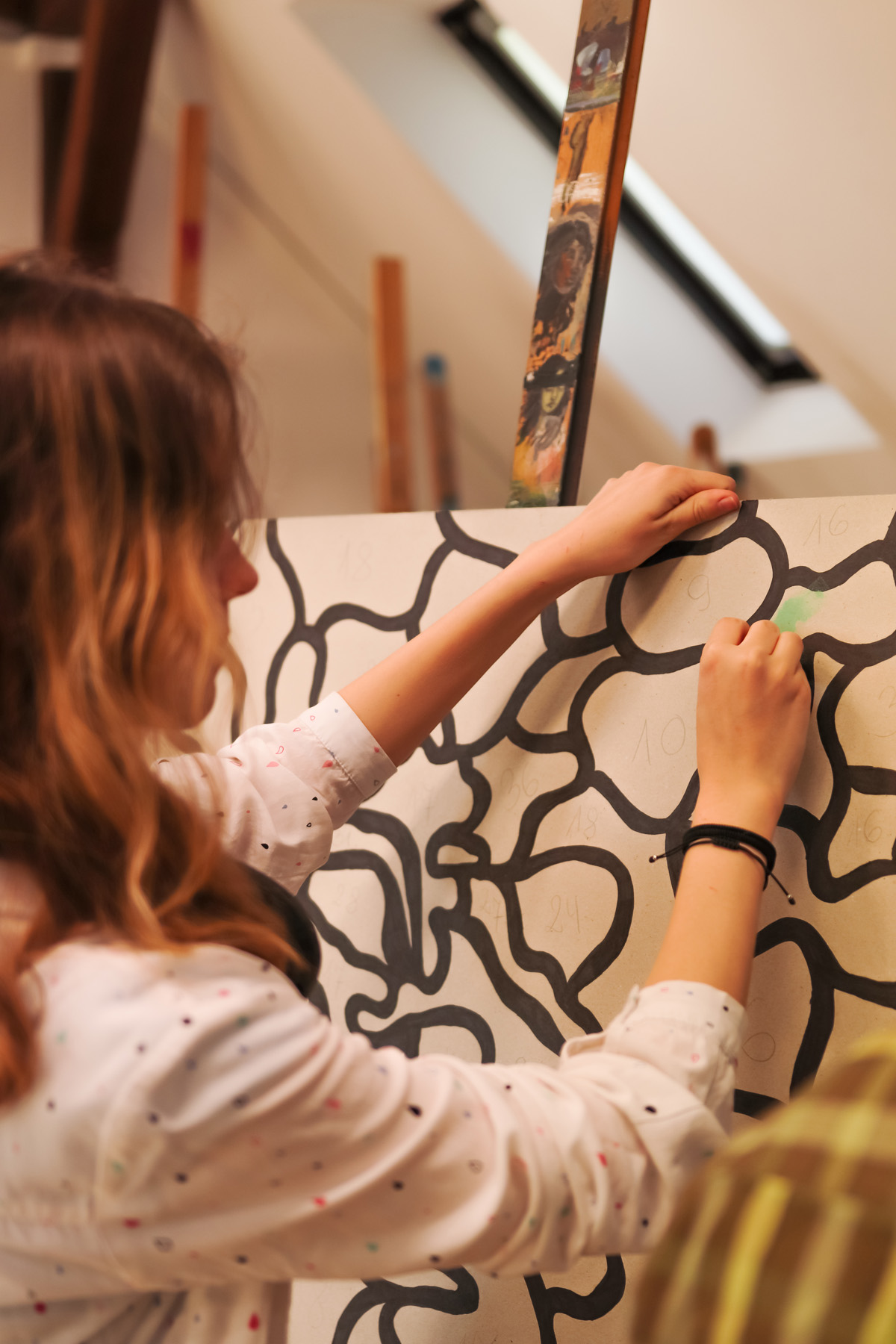
The work by 3rd-graders Aleksandra Malewicz and Justyna Łojewska is a participatory colouring board, that is intended to mobilise the recipients to take action.
This simple form also asks the philosophical question of whether art is creation or reproduction?
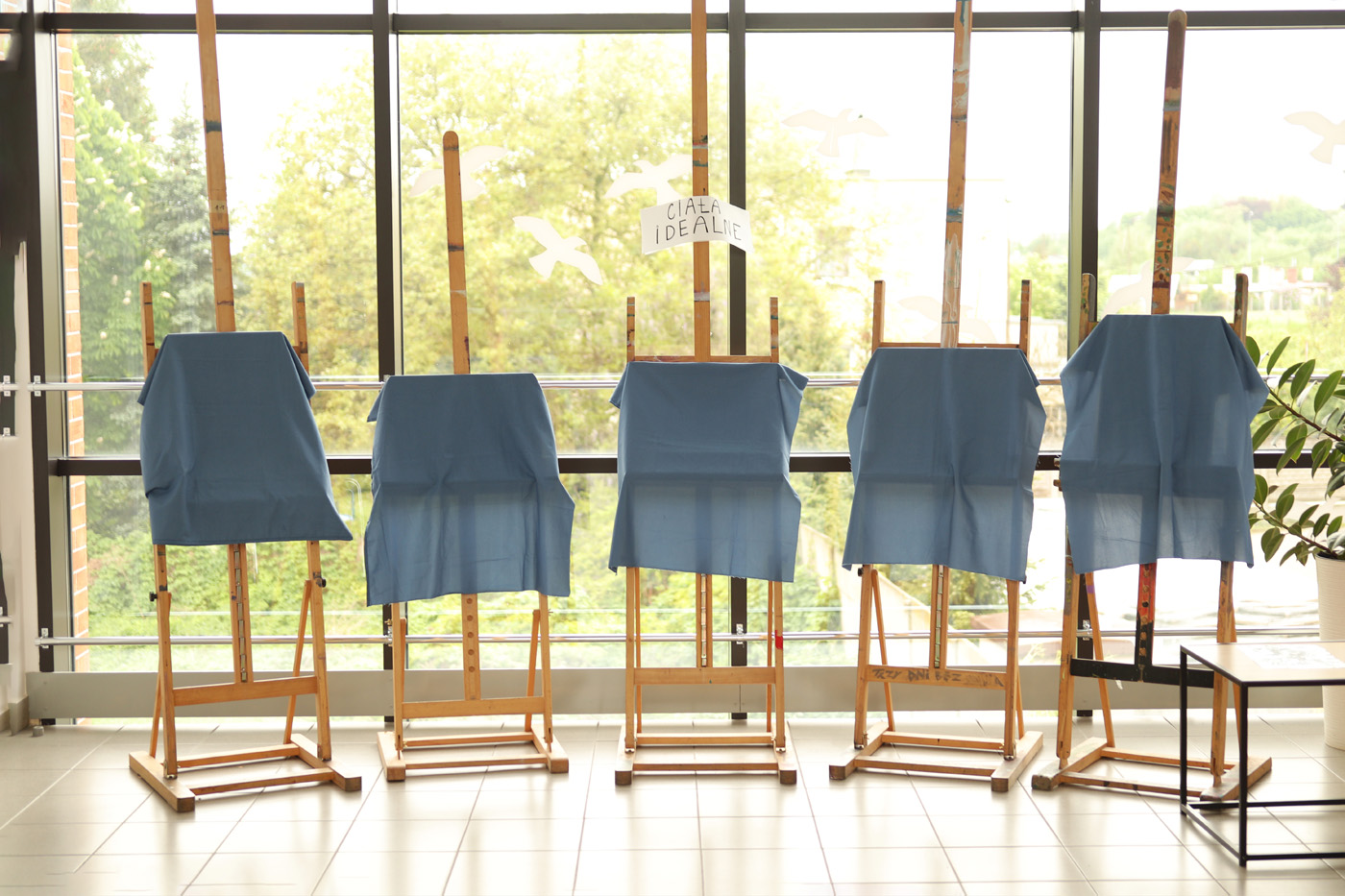
The work by 2nd-grader Eliza Wojtanowska titled “Ideal Bodies” is a reflection on our social beliefs regarding physical attractiveness. Eliza uses the concept of ready-made, photographs and mirrors to remind us that the “ideal” is a construct, as every body is ideal.
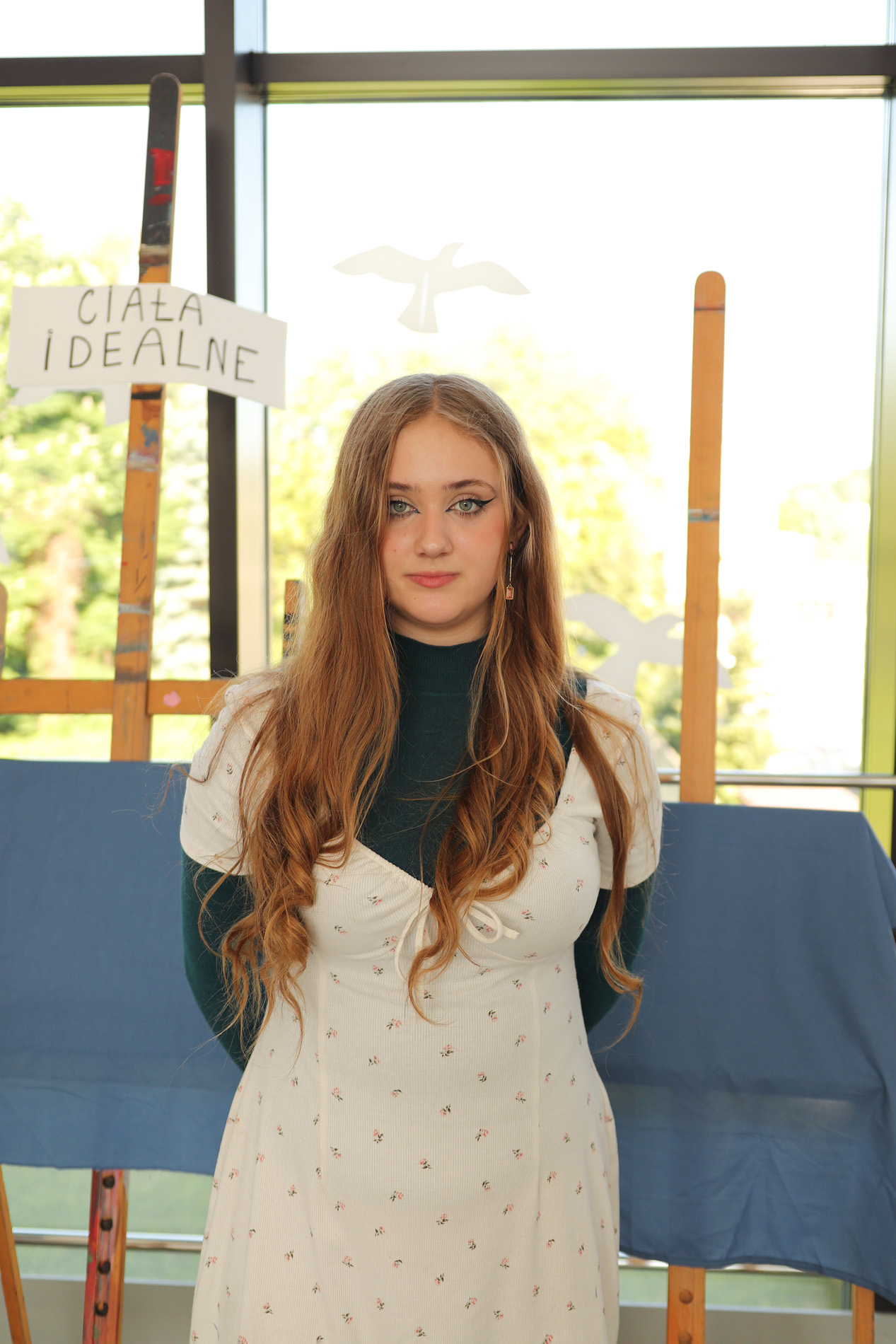
The work by 2nd-grader Eliza Wojtanowska titled “Ideal Bodies” is a reflection on our social beliefs regarding physical attractiveness. Eliza uses the concept of ready-made, photographs and mirrors to remind us that the “ideal” is a construct, as every body is ideal.
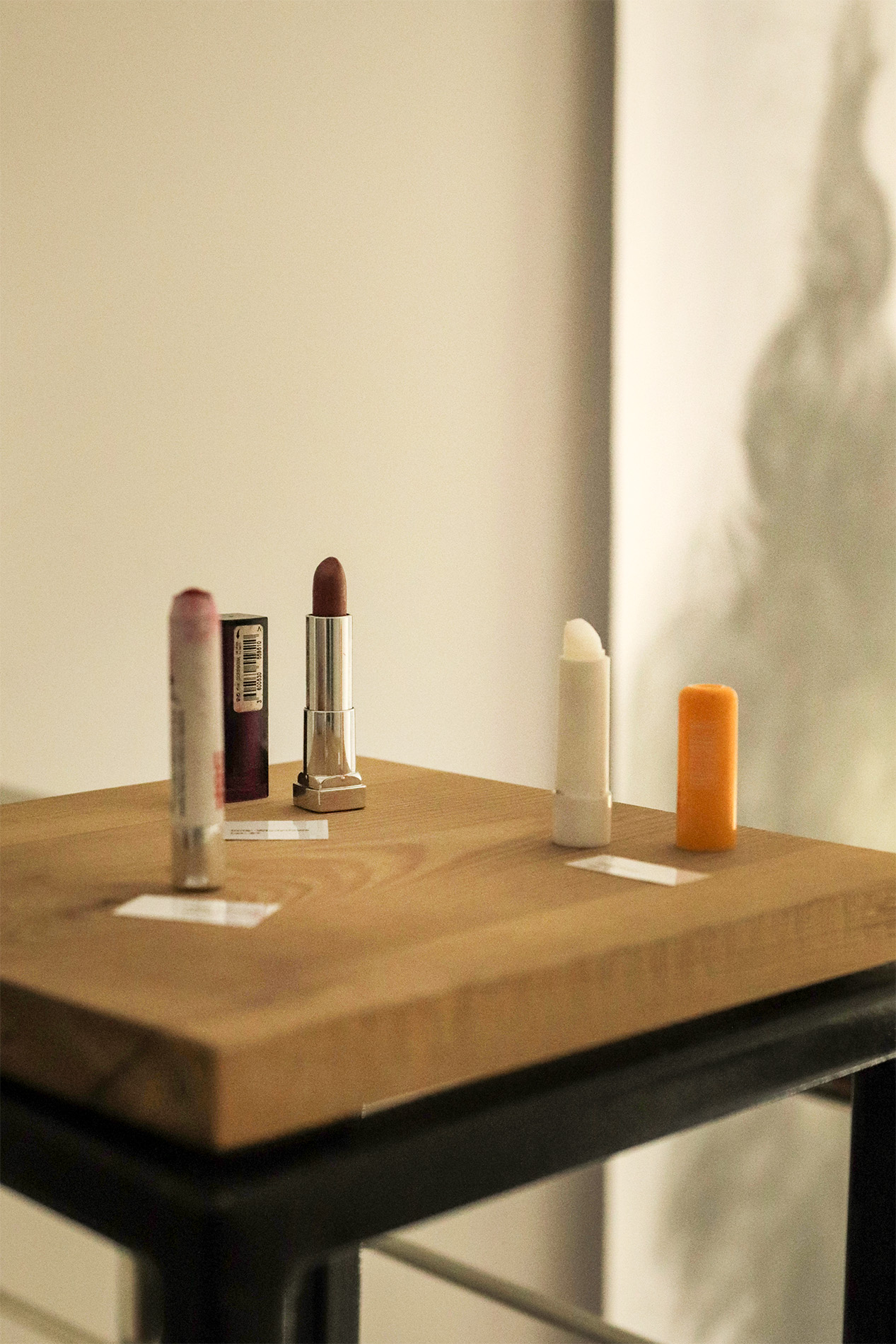
In her installation, 3rd-grader Julia Tomczak asks whether objects can tell stories of their owners and challenges the viewer’s imagination.
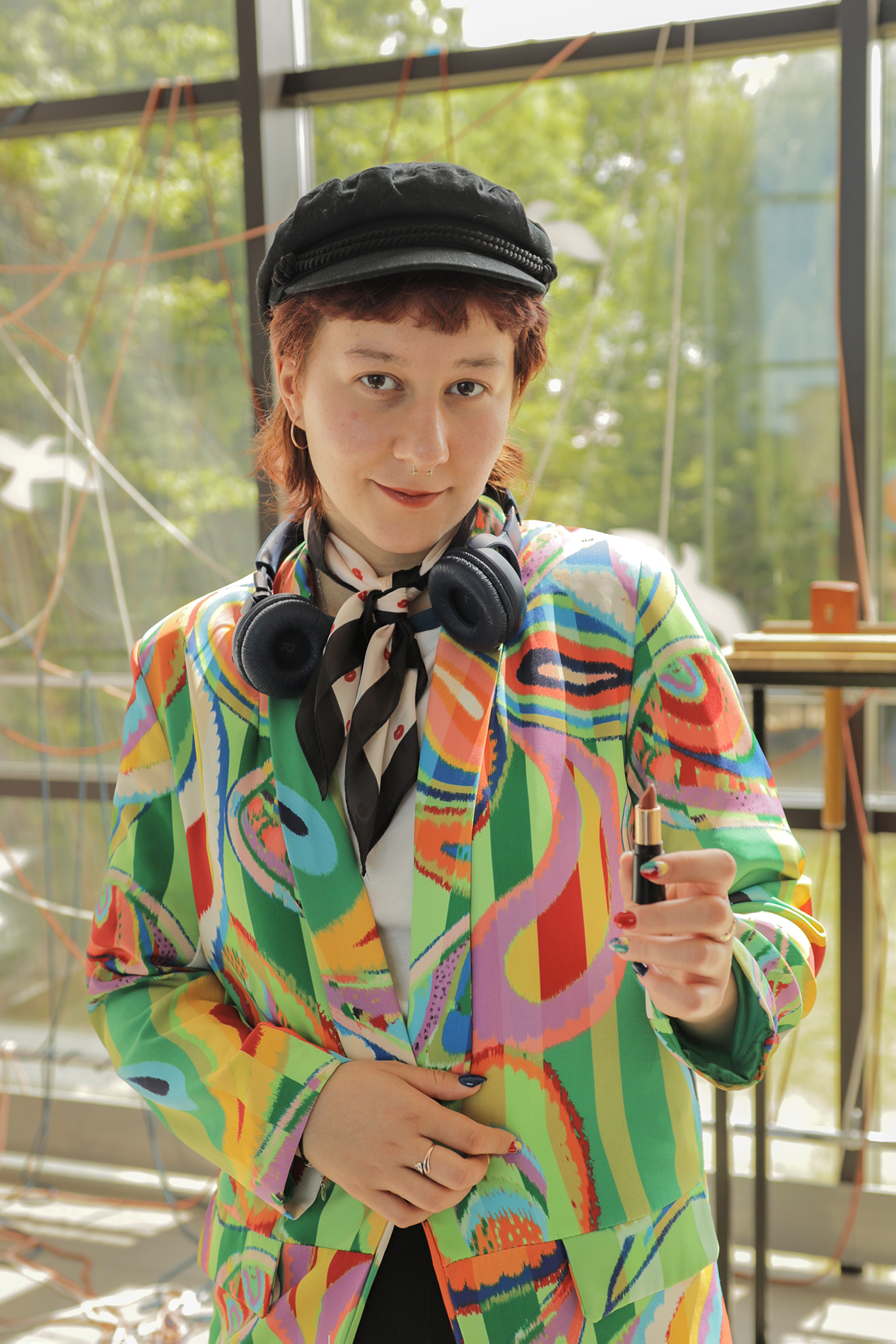
In her installation, 3rd-grader Julia Tomczak asks whether objects can tell stories of their owners and challenges the viewer’s imagination.
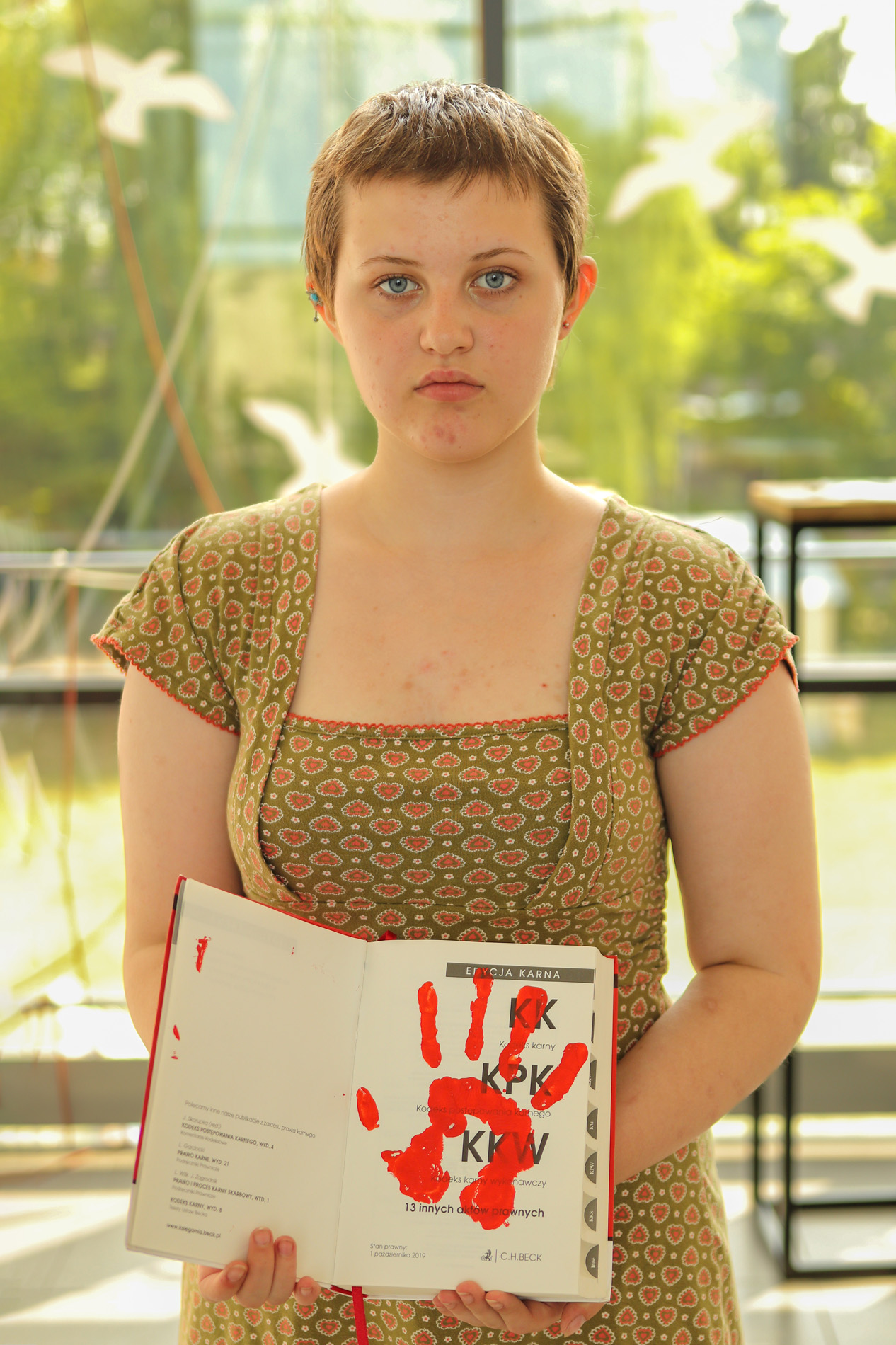
Karolina Horoszko from the 2nd grade uses a powerful, somewhat radical performance to remind us that human rights are being violated at any given moment around the world. Can we do anything to counter this?
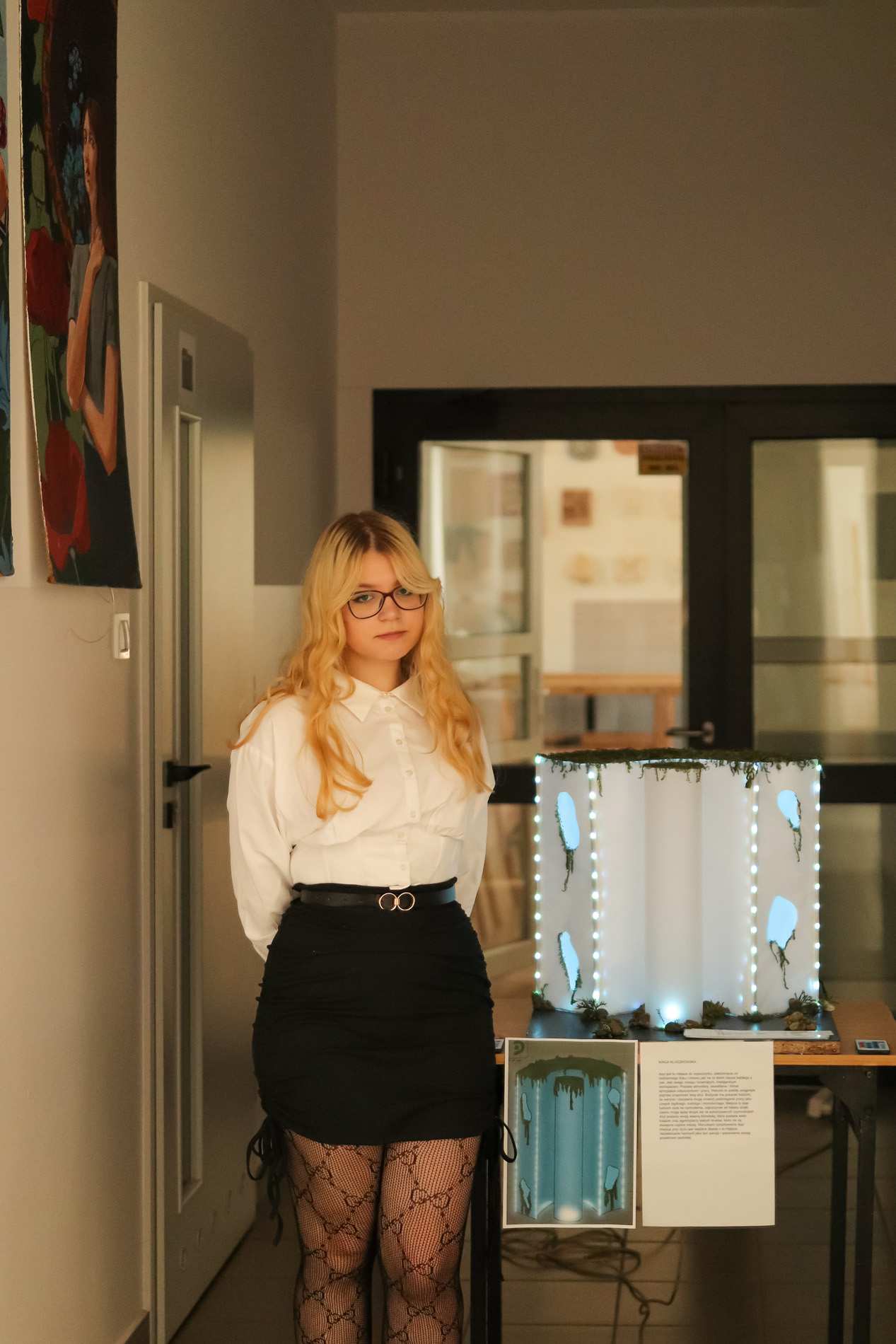
Kinga Kluczkowska from the 3rd grade invites the viewer to imagine a utopian vision of a magnificent futuristic space for work and leisure. Viewer, take a look at the mock-up and ask yourself what you expect from such a space.
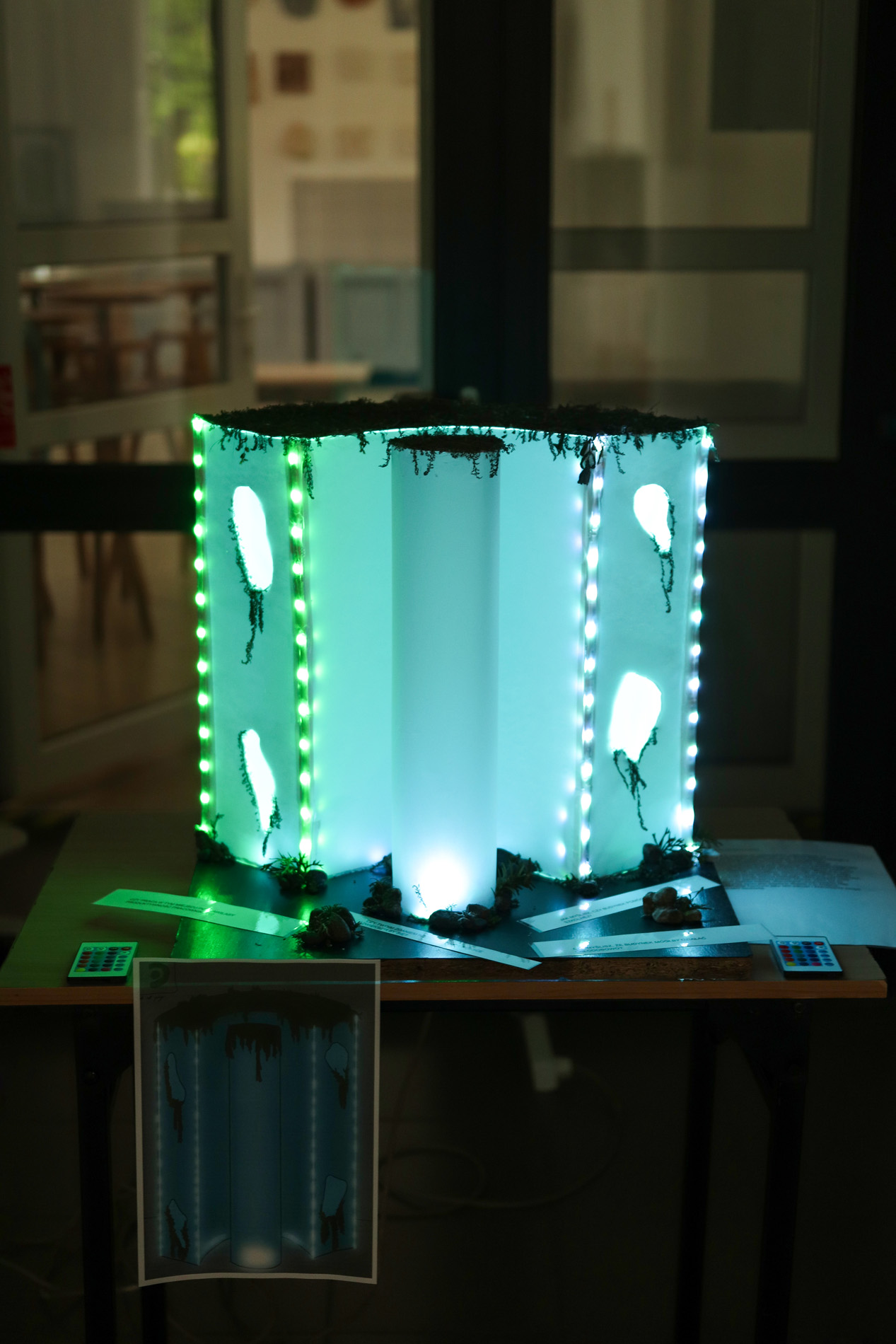
Kinga Kluczkowska from the 3rd grade invites the viewer to imagine a utopian vision of a magnificent futuristic space for work and leisure. Viewer, take a look at the mock-up and ask yourself what you expect from such a space.
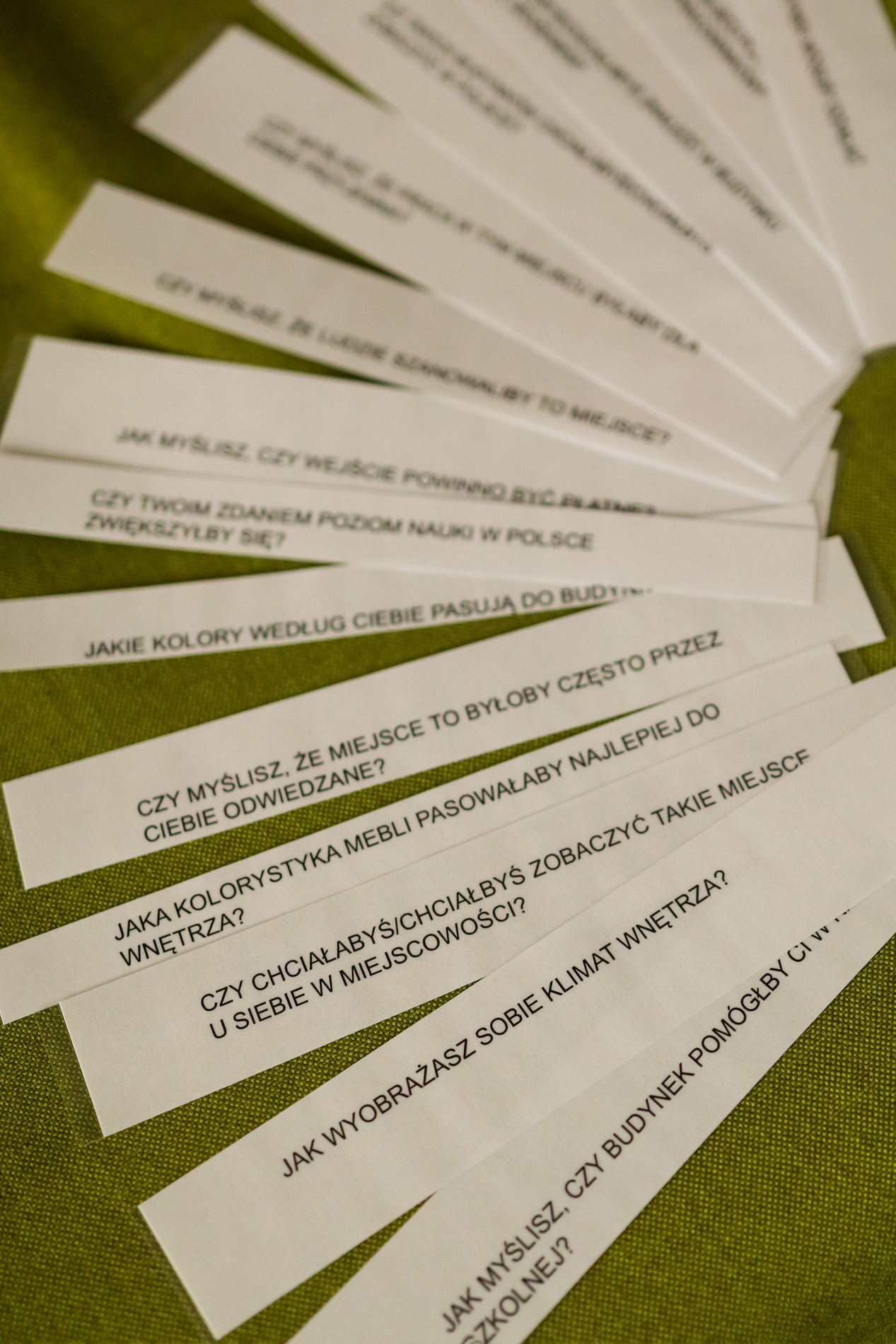
Kinga Kluczkowska from the 3rd grade invites the viewer to imagine a utopian vision of a magnificent futuristic space for work and leisure. Viewer, take a look at the mock-up and ask yourself what you expect from such a space.
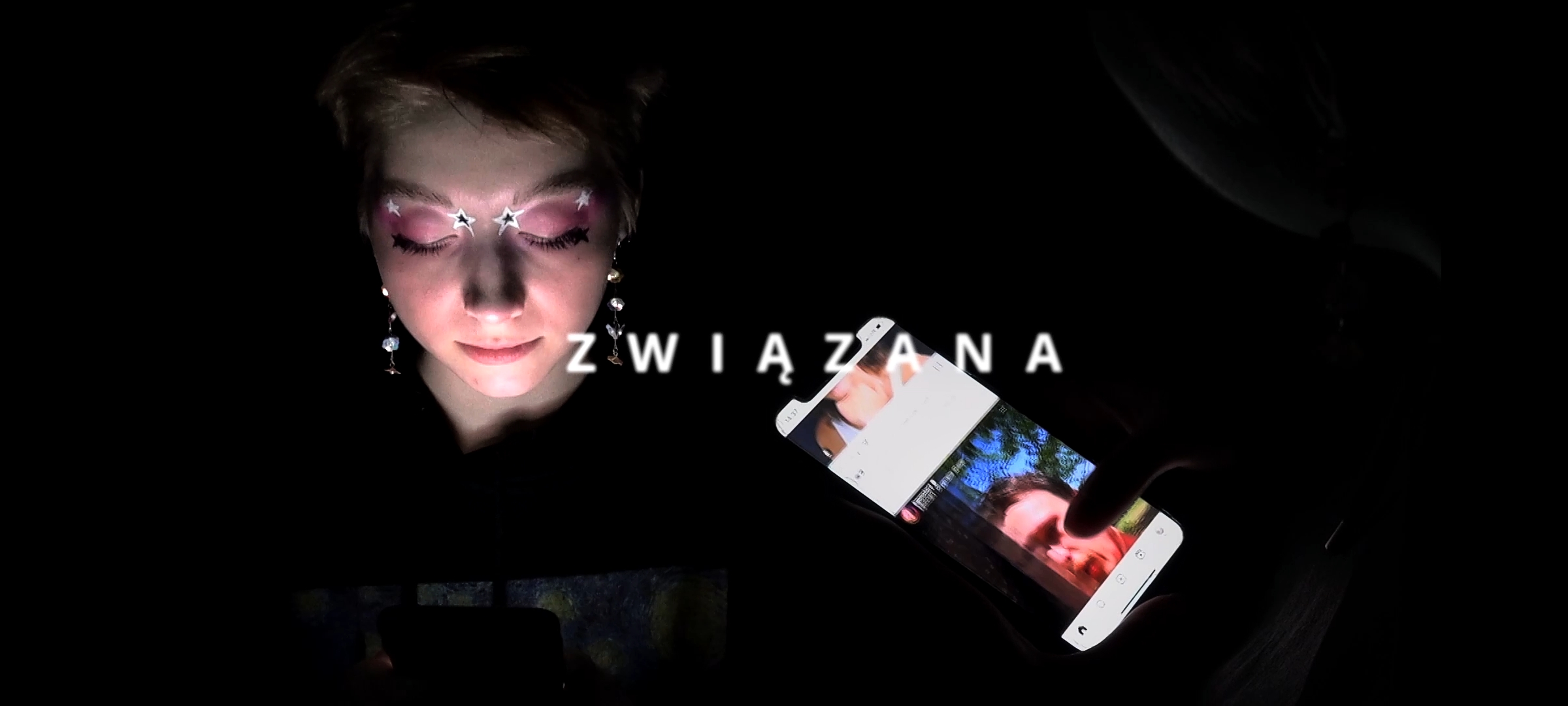
In her video installation, 2nd-grader Magdalena Piróg poses a question of whether it is possible to log out our heads and emotions from smartphones?
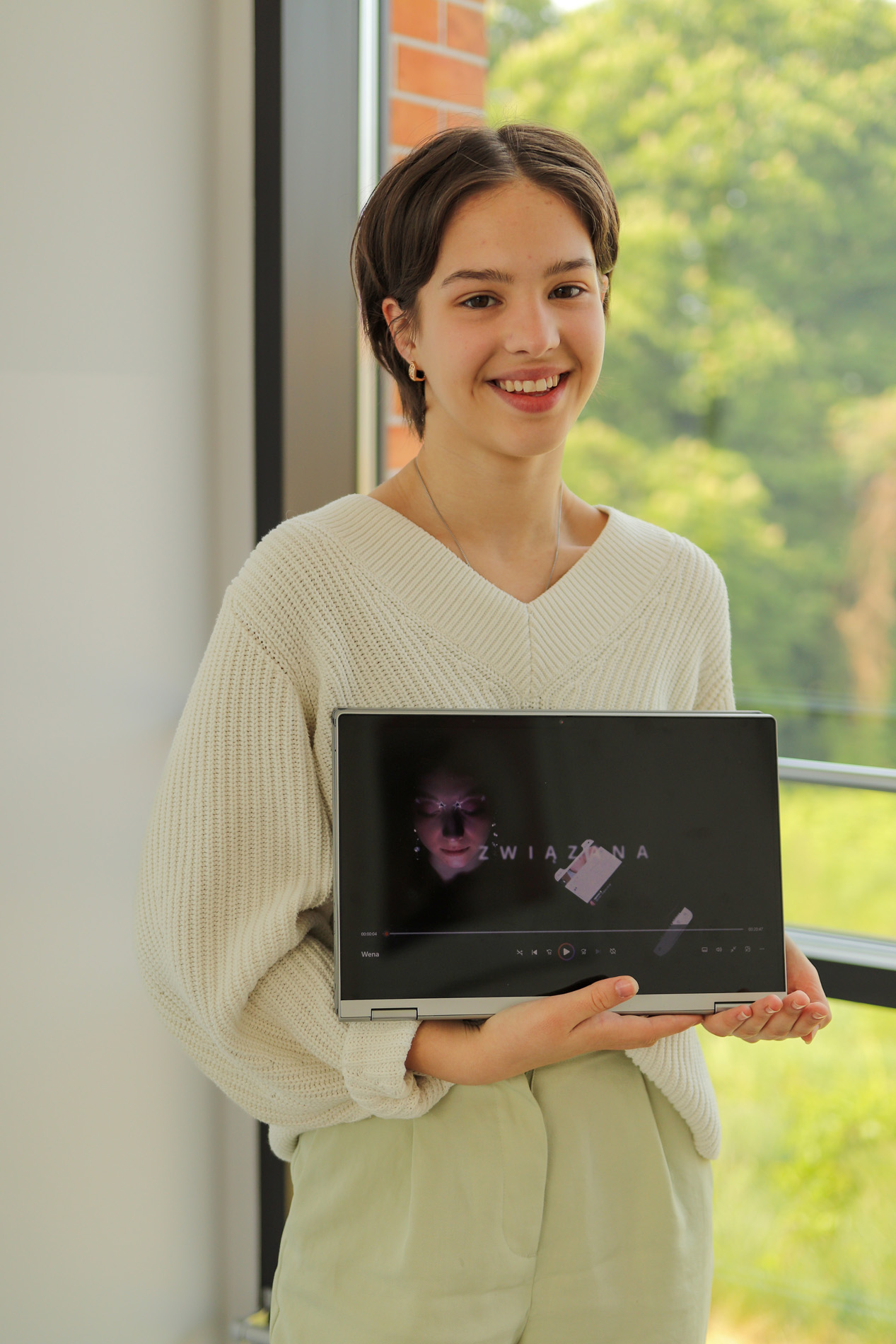
In her video installation, 2nd-grader Magdalena Piróg poses a question of whether it is possible to log out our heads and emotions from smartphones?
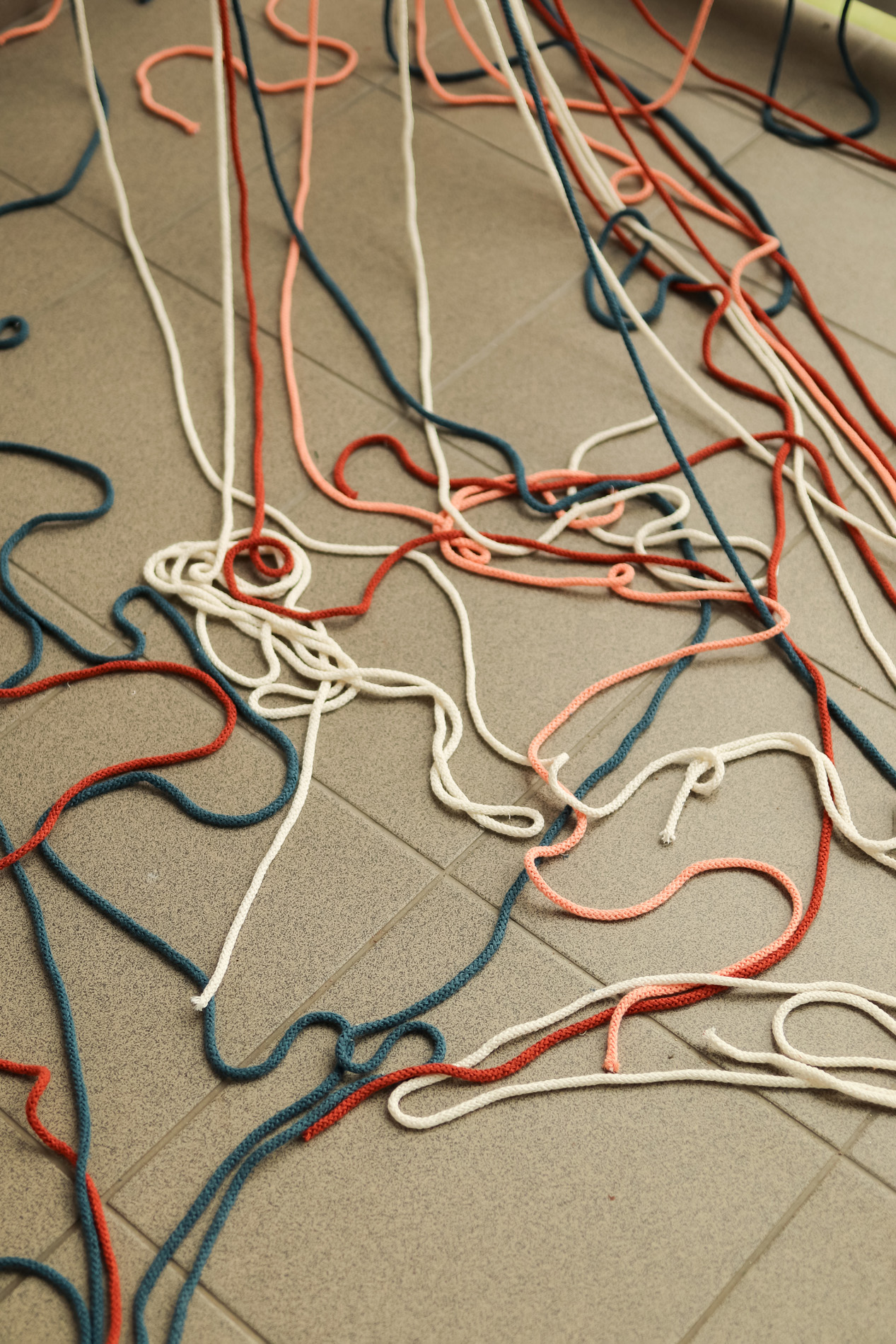
In her experimental piece utilising mixed media (including ropes and strings), 2nd-grader Malwina Gulińska reflects on a situation with no way out, the past, the feeling of “confusions - entanglements” and the emotional baggage that accompanies us.
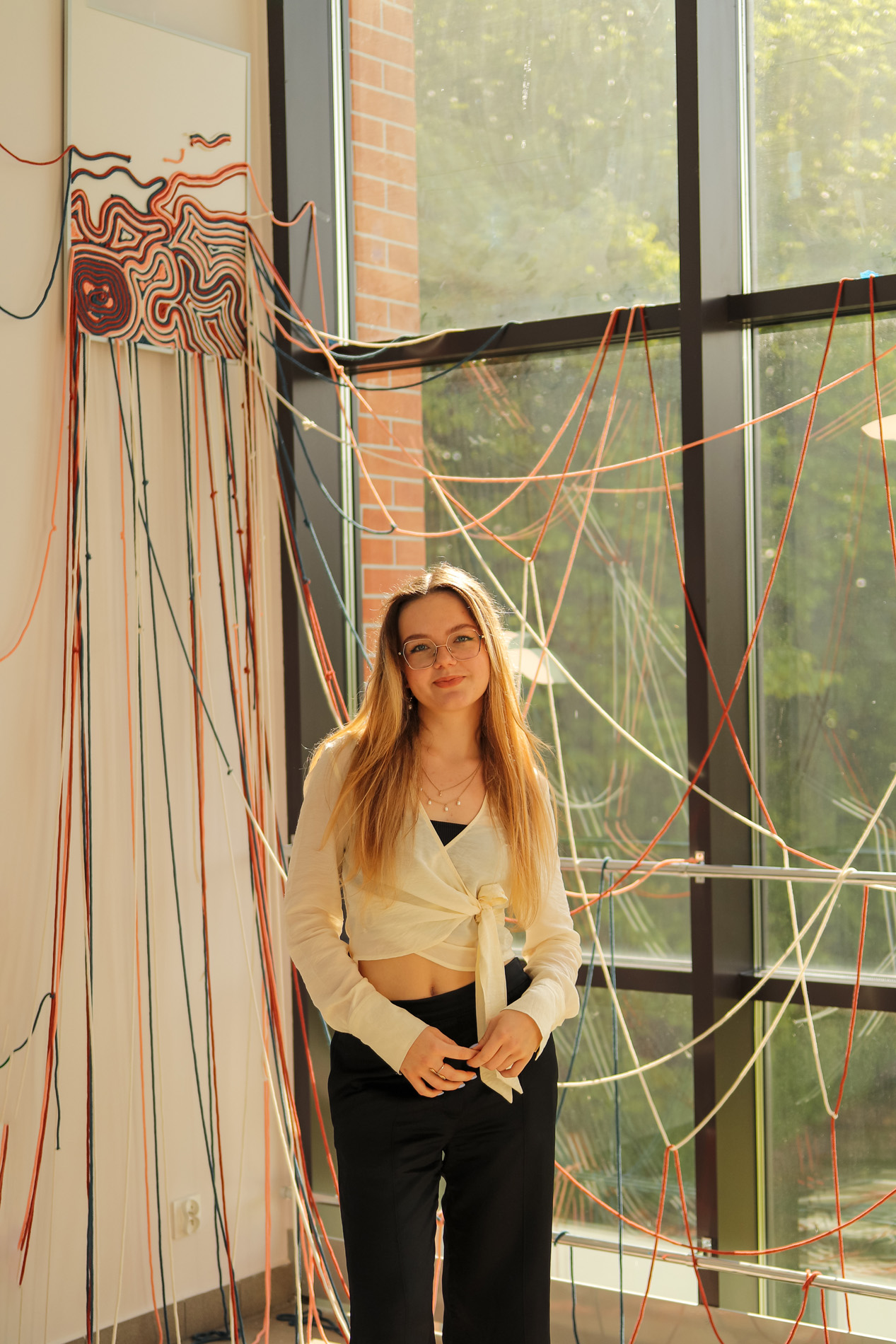
In her experimental piece utilising mixed media (including ropes and strings), 2nd-grader Malwina Gulińska reflects on a situation with no way out, the past, the feeling of “confusions - entanglements” and the emotional baggage that accompanies us.
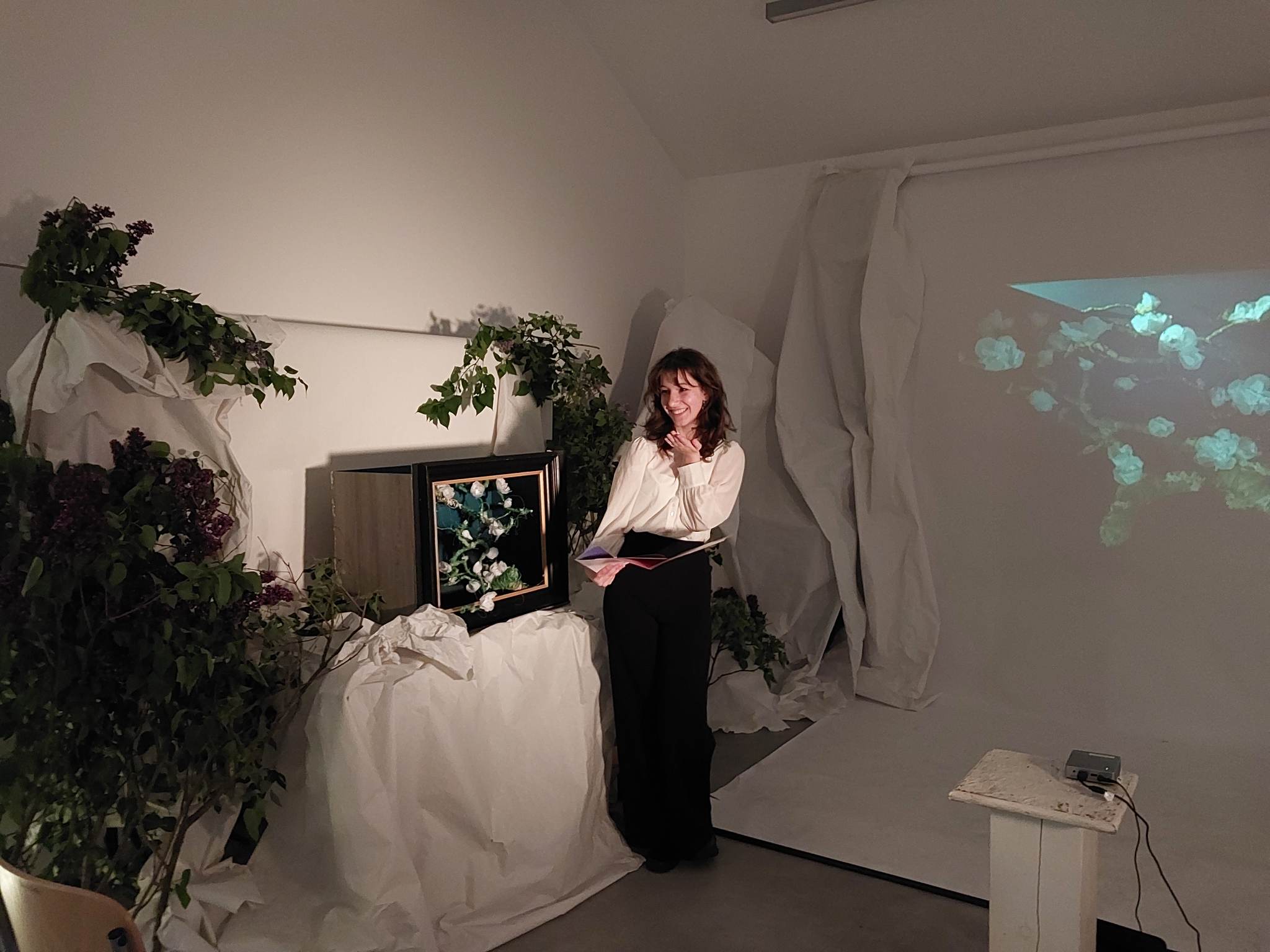
Martyna Chodorowska from the 2nd grade created an intermedia installation in which a mock-up, time-lapse video and environment - a lilac-scented, blossoming garden - take the viewer to a land of peace and tranquillity. The almond tree featured in her work is a reference to Vincent van Gogh’s oeuvre and symbolises hope.
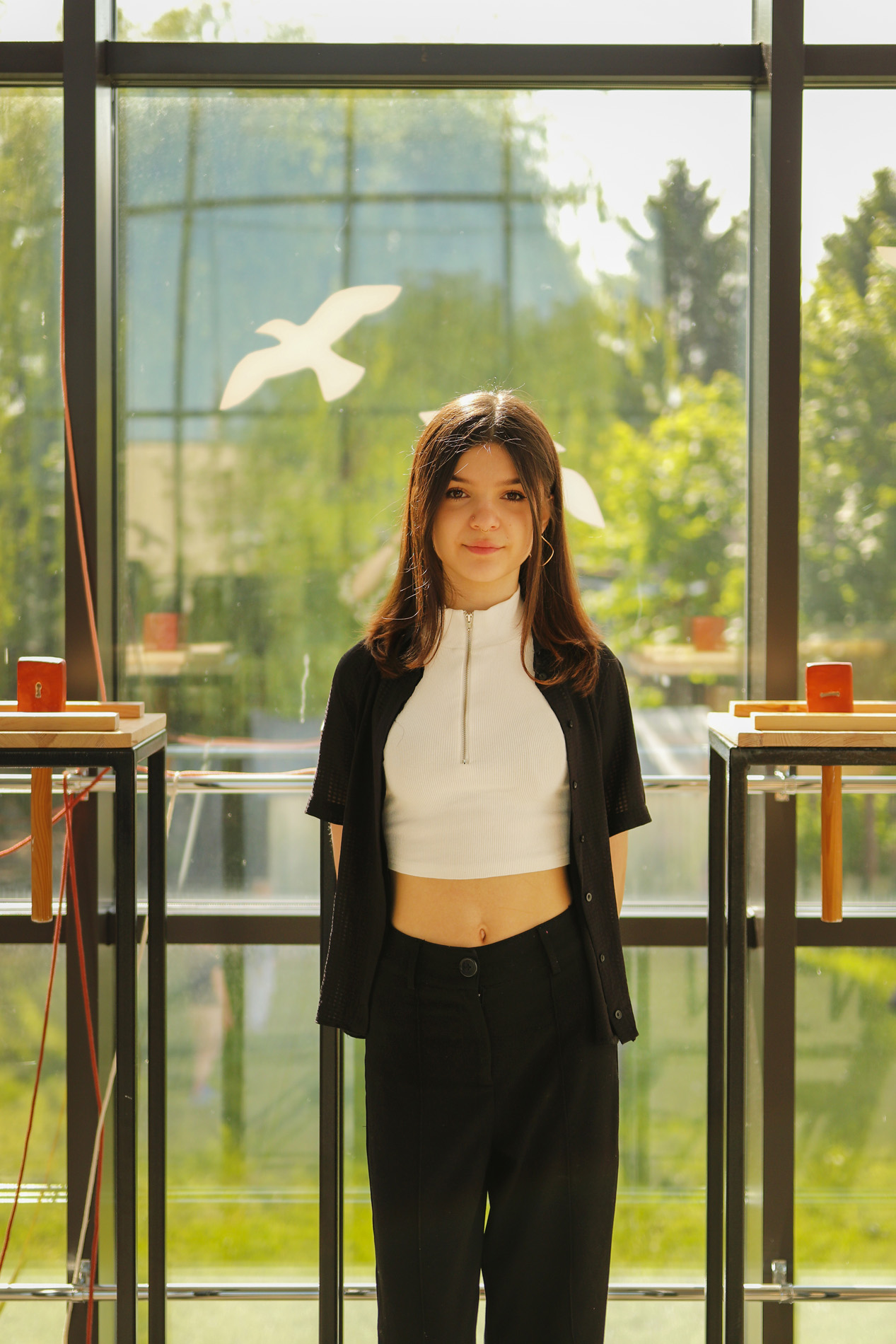
In her minimalist work combining sculpture and ready-made, 2nd grader Victoria Knycińska tells the story of finding a way out of a seemingly unsolvable predicament.
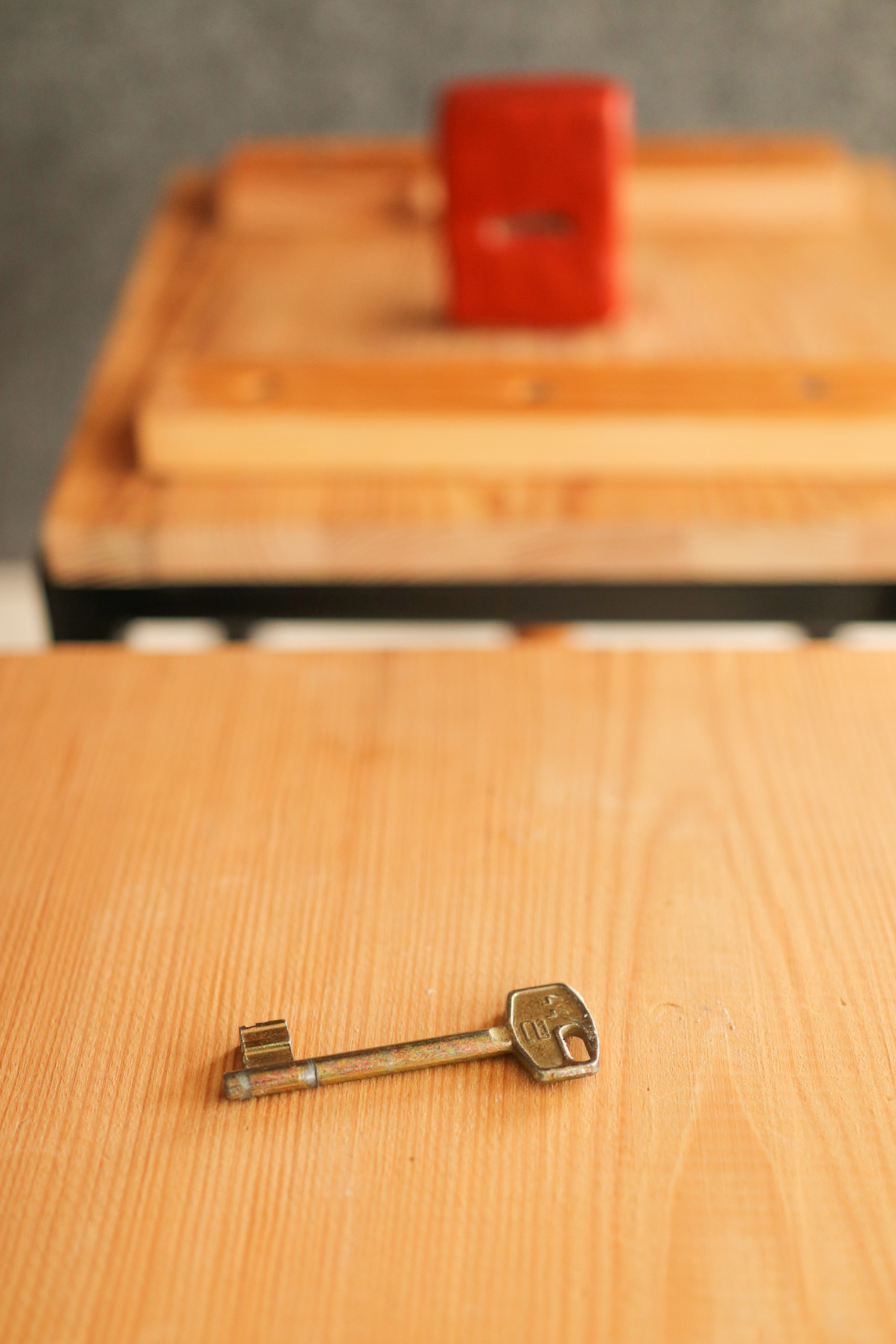
In her minimalist work combining sculpture and ready-made, 2nd grader Victoria Knycińska tells the story of finding a way out of a seemingly unsolvable predicament.
The students participating in the project developed knowledge of conceptual art and its collections in Polish exhibition institutions, the ability to plan their own work, to arrange an exhibition, to think about shaping the space for the viewer, and to analyse the artwork. The students also improved their ability to present their own work in front of an audience and experimented with creative methods that do not fit into the school core curriculum.
I think these meetings have made me more receptive to different methods that I would have never even thought of before. I was intrigued by the work of Edward Krasiński and it made me think more deeply about what art is. I will use this experience in my future creation.
Victoria Knycińska, 2nd grade
(...) the trip to Kraków was not only an opportunity for us to visit beautiful art museums, but also to broaden our knowledge and horizons. It has inspired us to further explore Polish and international (especially conceptual) art and to appreciate its value and significance. It was also great fun, which allowed us to look at contemporary art from different perspectives, from tours to workshops.
Martyna Chodorowska, 2nd grade
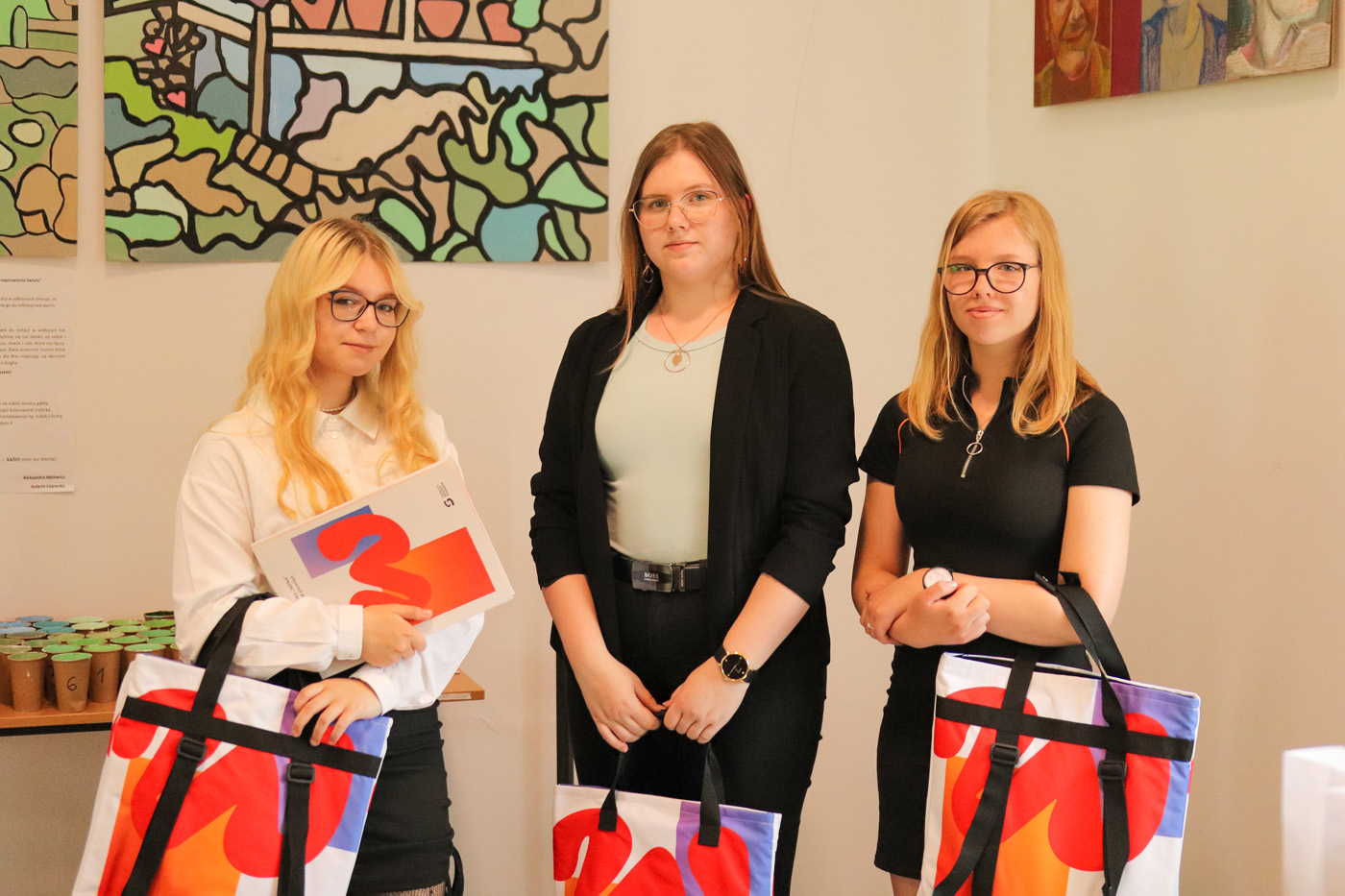
Paulina Łuczak – project scheduler, art history teacher.
Małgorzata Olewnik – teacher of the basics of design and multimedia design.
*Kinestezjon (1970) [Kinesthesia] by Wanda Gołkowska is one of the artist’s most compelling conceptual works; it was published in the catalogue of the “Conceptual Art” exhibition organised by Jerzy Ludwiński at “Pod Mona Lizą” Gallery. The work was designed as a spherical room, with a flexible, transparent platform for the viewer to stand on. The viewer would be placed between two sets of moving images projected onto the inner surfaces of the sphere representing the sky at the bottom, and the earth at the top. The work dealt with the issue of perception, which had already preoccupied the artist in the past. Kinestezjon, however, was not about the perception of external forms, but primarily about the sensations of one’s own body. The title was explained through the glossary terms included by Gołkowska: “Kinesthesia - the sense of position and movement of body parts in relation to one another. (...) Cenesthesia - a general feeling, a totality of indeterminate sensations, a sense of inhabiting one’s body”.
The feasible, yet never materialised, design of Kinestezjon was poetic and fantastical in nature and, as art critic Paweł Polit noted, it was close to the aesthetics of the sublime.
